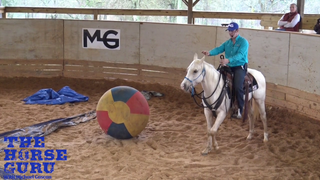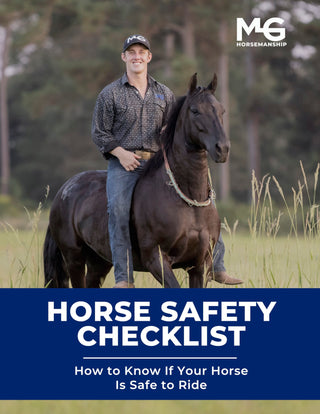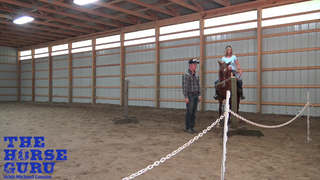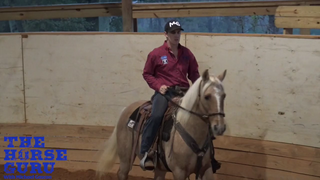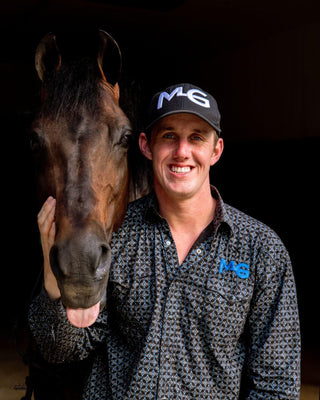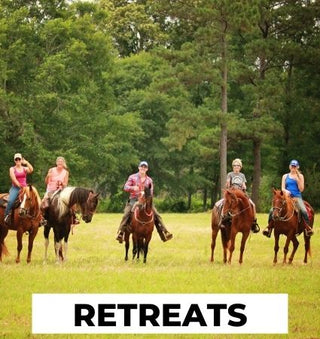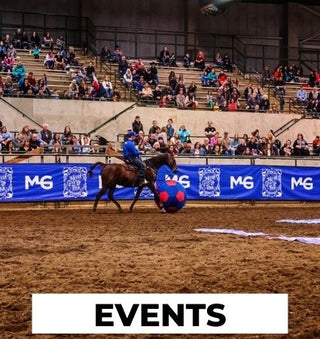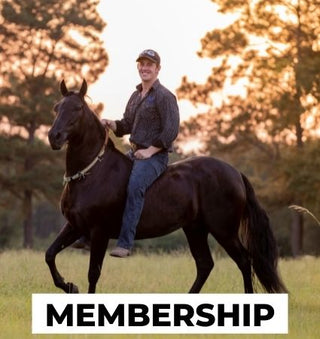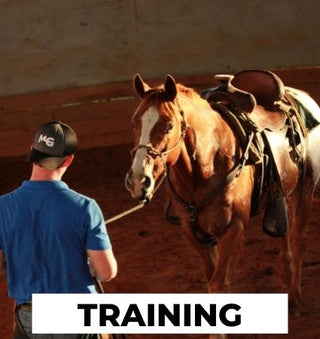Watch the Video Here or continue reading below!
Starting a colt, or young horse, can be a daunting task for many trainers, but with the right approach, it doesn’t have to be. In this blog post, we’ll explore a step-by-step method for colt starting that can be achieved in just 30 minutes. From groundwork to the first ride, this approach focuses on building trust, establishing communication, and ensuring that both horse and rider are calm, confident, and ready to move forward together.
What is Colt Starting?
Colt starting is the process of training a young horse to accept a rider and begin learning basic behaviors under saddle. This is typically the first formal training a horse will experience. While some may take weeks to start their colts, it’s entirely possible to lay the foundation for a successful relationship in just 30 minutes using a calm and patient approach.
Groundwork: The Foundation of Colt Starting
Before you even think about getting on your young horse, groundwork is essential. Groundwork builds the foundation for communication and trust between the horse and rider, ensuring that the horse learns how to respond to cues and become more relaxed in the presence of the rider.
1. Establishing Calmness and Trust
In the first few moments, you’ll want to ensure that the horse is calm and aware of your presence. It’s important to stay relaxed and not make any sudden movements that could startle the colt. When you're not in a hurry and allow the horse time to adjust to you, you’ll avoid unnecessary tension.
2. Loose Reins and Clear Communication
Using loose reins, you start to guide the horse through circles. This will get them moving without the need for tension or pulling. The goal here is to keep them moving calmly and understand the basics of being directed. If the horse becomes tense, simply continue the circle until the horse relaxes, drops their head, and responds to the cues you’re providing. This groundwork helps the horse to understand how to move forward without anxiety.
3. Disengaging the Hindquarters
Next, you will introduce the idea of disengaging the hindquarters. This maneuver helps a colt learn to turn and engage their body in a more controlled manner. Disengaging helps in getting the horse to focus on their own movements and also makes them more responsive to the rider’s cues once under saddle.
The First Ride: Keeping It Simple and Calm
Once you’ve laid the groundwork and the colt is responsive to your guidance, it’s time for the first ride. This is a critical moment that can either create confidence or instill fear in the young horse.
1. Getting on the Horse
When it’s time to mount, take it slow. Don’t rush. The first time you mount the colt, do so gently. Avoid pulling the reins or overwhelming the horse. Instead, focus on relaxing your body, which will help the horse relax in response. Remember, the first ride should be about calm, quiet communication rather than achieving perfection.
2. Focus on Relaxation
While riding, continue to keep your reins loose and avoid giving too many cues. This is important because the horse may still be figuring out how to carry your weight and move under saddle. Instead of forcing the horse to go forward, allow them to move at their own pace while still guiding them with your body and subtle leg cues.
The key here is patience. The first ride should not be about pushing the horse to move faster or perform. It’s about creating a foundation for future rides. If the colt gets nervous or tries to surge forward, don’t grab the reins or tense up. Simply allow them to move and regain composure.
3. Moving in Circles and Transitions
Once the colt is moving comfortably at a walk, you can introduce more movement. Start with simple transitions between walk, trot, and even a canter if the horse is ready. The first transitions should be gradual, and the goal is to keep the horse calm and attentive to your cues. If they become anxious, slow down and go back to a pace where they feel comfortable.
4. Avoid Overloading the Colt
As tempting as it may be to move on to more complex tasks, avoid overloading the colt with too much too soon. You want the young horse to learn to trust you and not feel rushed. It’s best to stay within the boundaries of what the colt can handle. A relaxed horse is a learning horse.
Why It’s Important to Keep the Colt’s Mind Relaxed
One of the most important aspects of colt starting is keeping the horse’s mind relaxed. The more relaxed the horse is, the easier it will be for them to accept new experiences and challenges. The ultimate goal is not just to get the horse moving, but to ensure they are calm, focused, and ready to learn.
Signs of Relaxation to Look For:
-
Loose neck and head: If the horse drops their head or holds a relaxed posture, they’re beginning to trust you.
-
Calm breathing: A horse that is breathing calmly is no longer in a state of fear or anxiety.
-
Slower movements: When a colt feels safe, they won’t rush; instead, they will move with more purpose.
The Role of the Rider: Confidence and Patience
As the rider, your role is crucial. A young horse will look to you for leadership and guidance, which means it’s important for you to stay calm and confident. Don’t be afraid to take a step back if the colt is overwhelmed, and never rush through steps. The key to success in colt starting is patience, calmness, and consistency.
What To Avoid:
-
Don’t Grab the Reins Too Early: If the colt surges or gets anxious, don’t grab the reins. This can create tension and confusion.
-
Don’t Rush the Process: Remember, not every colt is the same, and rushing through steps can cause problems in the long run.
-
Don’t Force Movement: If the horse isn’t ready to canter or trot, that’s okay. Allow the colt to progress at their own pace.
Final Thoughts on Colt Starting in 30 Minutes
Starting a colt doesn’t have to be a long, drawn-out process. By focusing on groundwork, maintaining calmness, and progressing at a comfortable pace for the colt, you can start a young horse in just 30 minutes. The key to success lies in creating a relationship built on trust and communication, ensuring that both the horse and rider are prepared for the journey ahead.
If you follow these steps, you’ll be able to build a solid foundation for your colt that will carry them through their training and help you form a strong, trusting partnership.


